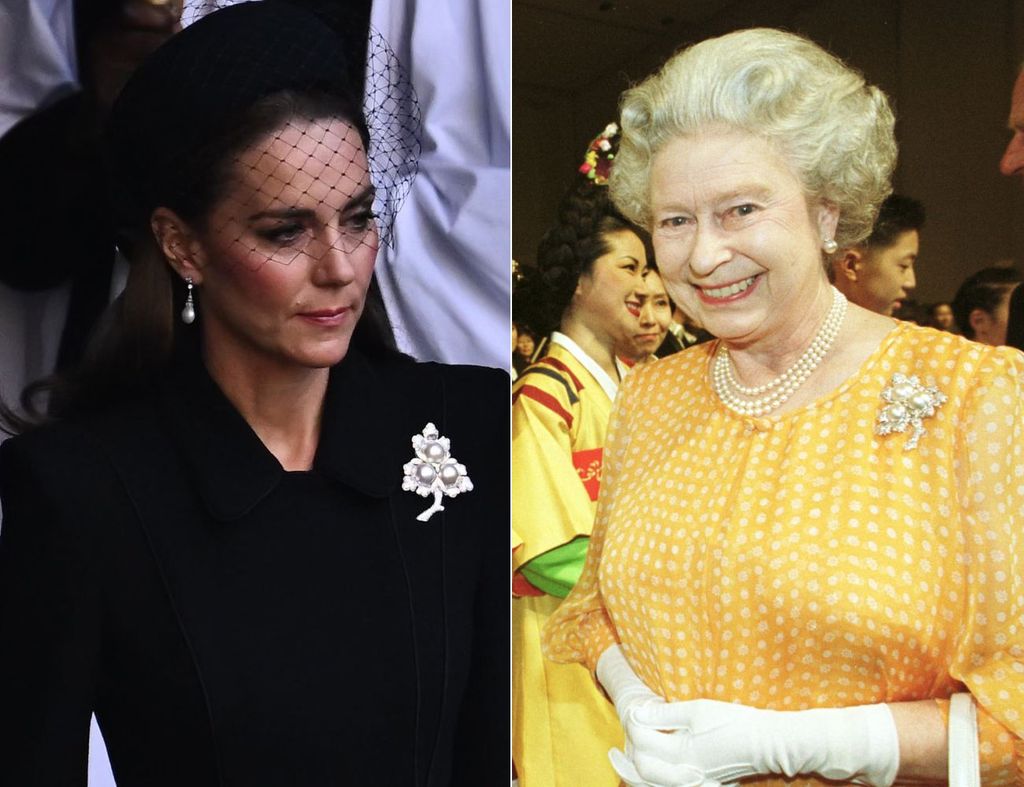An AI-generated depiction of the Princess of Wales at a hypothetical State Banquet has sparked renewed conversation online about royal symbolism, legacy and visual influence inside the modern monarchy. The imagined tableau — widely shared across social platforms this week — envisions Catherine in full ruby parure, enveloped by candlelight, gilt architecture and the formal pageantry associated with Buckingham Palace’s most elite occasions.
At the center of the scene is the Burmese Ruby Tiara, created for Queen Elizabeth II in 1973 and built using 96 Burmese rubies gifted to the late monarch in gratitude and believed to offer protection and strength. Rendered alongside Tudor-rose motifs in diamonds, the tiara in the image is shown adorning Catherine’s hair, casting a ruby-red fire back into the ballroom.
Complementing it, the artwork places around the Princess’s neck Queen Victoria’s Ruby Necklace — a piece known for its saturated cabochon stones and formal presence — resting above a fitted white silk gown. Queen Mary’s Ruby Earrings complete the imagined set, uniting three royal eras in a single visual statement.

The AI portrayal also includes Prince William seated across the table, his gaze suggested to anchor the scene in emotion rather than just protocol, while strings from an unseen orchestra underscore the illusion of ceremony. The result, viewers say, is an arresting fusion of heritage and glamour that evokes the “enchanted optic authority” once associated with Queen Elizabeth II at State Banquets.
Critics note that although the scene is artificial, its public reception reveals something real: ceremonial regalia continues to operate not merely as jewelry but as narrative — a staging device through which the monarchy signals continuity, power and cultural memory.
The question now rippling through comment threads is simple and telling: if Catherine were to appear like this in reality, would the world once again feel the same spell that Elizabeth II cast on global audiences for decades — or would the meaning of monarchy land differently in a post-Elizabeth age?
